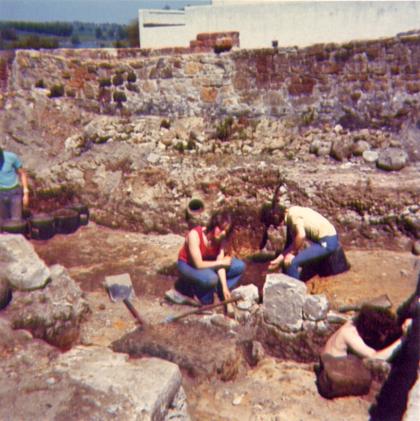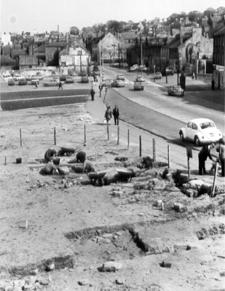Ben Miller
Source - http://www.culture24.org.uk/history-and-heritage/archaeology/art521751-antler-waste-reveals-medieval-scottish-industry-as-archaeologists-reveal-findings-decades-after-dig
Post-excavation analysis of work carried out decades ago in West Lothian burgh published for first time

Excavations in Linlithgow were originally held almost 50 years ago© Courtesy Guard Archaeology
A “remarkable” amount of antler waste shows that animal product industries and tanning took place in one of the most important burghs of medieval Scotland more than 500 years ago, according to archaeologists who have revealed a sequence of walls, surfaces, closes and pits found on a single street between 1966 and 1977.
Glass beads, post-medieval iron objects, a Romanesque buckle and a padlock were discovered in Linlithgow, an area which was essentially a High Street between Edinburgh and Glasgow, first recorded during the reign of David I in the early 12th century.
An excavation carried out in 1973 produced the largest assemblage of antler waste ever found in a Scottish burgh, including evidence of craft working on a larger scale than experts had previously found at medieval urban Scottish digs.
A group of glass beads had different forms and irregularities, suggesting there was no “standardisation” of manufactured items during the 18th and 19th centuries.

Post-excavation analysis of the finds has been published for the first time© Courtesy Guard Archaeology
Linlithgow benefited from the loss of Berwick to the English during the late 14th and early 15th centuries, raising up to £700 from exports. More than three-quarters of its trade was wool, with the rest comprising hides and woolfells during the earlier period and cloth later on.
The importance of the burgh was cemented when it was made a member of the influential Court of the Four Burghs in 1369. In line with the wider economy, it suffered economic decline during the 15th and and 16th centuries, reflecting the Scottish economy as a whole, but raw materials gave the burgh wealth before leatherworking became the principle industry, with 17 tanners processing 20,000 skins and hides each year.
More than a dozen tawers – making hides and skins into leather by steeping them in a solution of alum and salt – produced up to 60,000 skins and hides a year alongside 18 leather curriers and 100 shoemakers, responsible for around 24,000 pairs of shoes a year.
“The historic burgh of Linlithgow underwent an extensive programme of town centre redevelopment in the 1960s and 1970s, affecting large and relatively undisturbed sites in highly significant locations,” says Catherine Smith, who helped compile the report for Alder Archaeology.
“There was very little provision for urban archaeology in Scotland at that time, but the obvious importance of the sites prompted a series of responses from those working in the field, in some cases improvised with little or no resources.
“The three excavations in this publication recovered an important record of a large part of Linlithgow’s archaeology.
“While there have been several subsequent excavations in Linlithgow, the excavations reported here were the first to examine significant areas in the heart of the medieval burgh.”